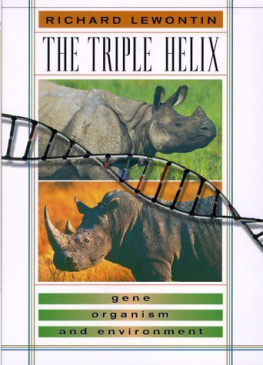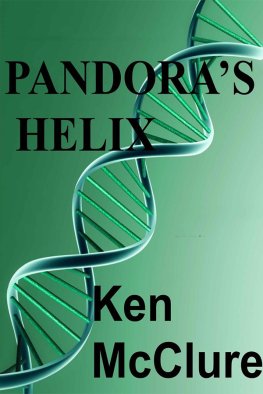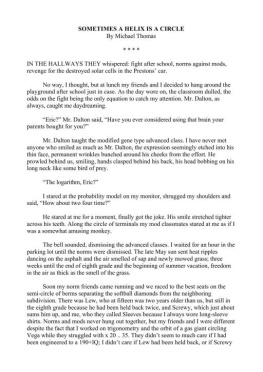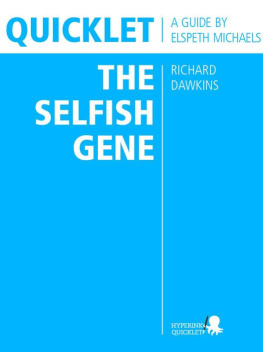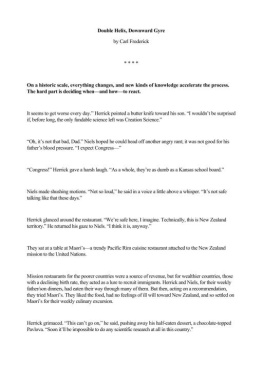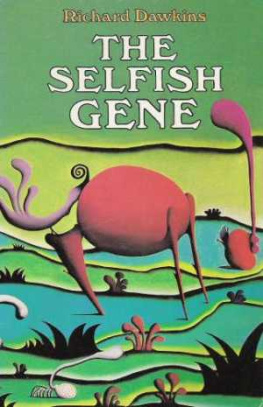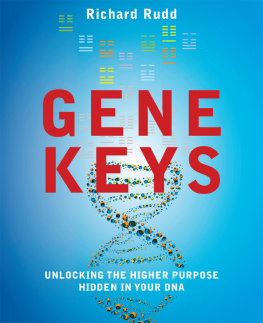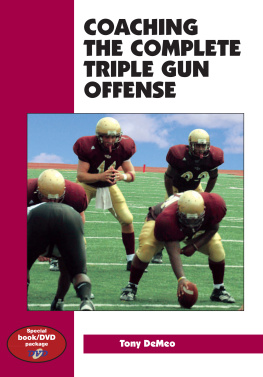Richard Lewontin - The Triple Helix: Gene, Organism, and Environment
Here you can read online Richard Lewontin - The Triple Helix: Gene, Organism, and Environment full text of the book (entire story) in english for free. Download pdf and epub, get meaning, cover and reviews about this ebook. City: Cambridge, year: 2000, publisher: Harvard University Press, genre: Romance novel. Description of the work, (preface) as well as reviews are available. Best literature library LitArk.com created for fans of good reading and offers a wide selection of genres:
Romance novel
Science fiction
Adventure
Detective
Science
History
Home and family
Prose
Art
Politics
Computer
Non-fiction
Religion
Business
Children
Humor
Choose a favorite category and find really read worthwhile books. Enjoy immersion in the world of imagination, feel the emotions of the characters or learn something new for yourself, make an fascinating discovery.
- Book:The Triple Helix: Gene, Organism, and Environment
- Author:
- Publisher:Harvard University Press
- Genre:
- Year:2000
- City:Cambridge
- Rating:4 / 5
- Favourites:Add to favourites
- Your mark:
- 80
- 1
- 2
- 3
- 4
- 5
The Triple Helix: Gene, Organism, and Environment: summary, description and annotation
We offer to read an annotation, description, summary or preface (depends on what the author of the book "The Triple Helix: Gene, Organism, and Environment" wrote himself). If you haven't found the necessary information about the book — write in the comments, we will try to find it.
The Triple Helix: Gene, Organism, and Environment — read online for free the complete book (whole text) full work
Below is the text of the book, divided by pages. System saving the place of the last page read, allows you to conveniently read the book "The Triple Helix: Gene, Organism, and Environment" online for free, without having to search again every time where you left off. Put a bookmark, and you can go to the page where you finished reading at any time.
Font size:
Interval:
Bookmark:
THE
TRIPLE HELIX
Gene, Organism, and Environment
RICHARD LEWONTIN
HARVARD UNIVERSITY PRESS
CAMBRIDGE, MASSACHUSETTS
LONDON, ENGLAND - 2000
1998, 2000
ISBN 0-674-00159-1
ACKNOWLEDGMENTS
The first three chapters of this book were originally presented as lectures in the Lezioni Italiani in Milan, and I am very grateful to Pino Donghi of the Fondazione Sigma Tau for having arranged those lectures and for having pressed for their original publication as Gene, Organismo e Ambiente by Editori Laterza. I added the last chapter at the urging of Michael Fisher of Harvard University Press, whose suggestions are greatly appreciated. I owe an immense debt to Richard Burian, whose careful and sophisticated review of the manuscript, especially of Chapter IV, resulted in a critical improvement from an earlier version. Finally, the text was greatly improved by Camille Smiths light but unerring editing. I wish she could edit everything I write.
CONTENTS
I GENE AND ORGANISM
II ORGANISM AND ENVIRONMENT
III PARTS AND WHOLES, CAUSES AND EFFECTS
IV DIRECTIONS IN THE STUDY OF BIOLOGY
GENE
AND
ORGANISM
It is not possible to do the work of science without using a language that is filled with metaphors. Virtually the entire body of modern science is an attempt to explain phenomena that cannot be experienced directly by human beings, by reference to forces and processes that we cannot perceive directly because they are too small, like molecules, or too vast, like the entire known universe, or the result of forces that our senses cannot detect, like electromagnetism, or the outcome of extremely complex interactions, like the coming into being of an individual organism from its conception as a fertilized egg. Such explanations, if they are to be not merely formal propositions, framed in an invented technical language, but are to appeal to the understanding of the world that we have gained through ordinary experience, must necessarily involve the use of metaphorical language. Physicists speak of waves and particles even though there is no medium in which those waves move and no solidity to those particles. Biologists speak of genes as blueprints and DNA as information. Indeed, the entire body of modern science rests on Descartess metaphor of the world as a machine, which he introduced in Part V of the Discourse on Method as a way of understanding organisms but then generalized as a way of thinking about the entire universe. I have hitherto described this earth and generally the whole visible world, as if it were merely a machine in which there was nothing at all to consider except the shapes and motions of its parts (Principles of Philosophy, IV).
While we cannot dispense with metaphors in thinking about nature, there is a great risk of confusing the metaphor with the thing of real interest. We cease to see the world as if it were like a machine and take it to be a machine. The result is that the properties we ascribe to our object of interest and the questions we ask about it reinforce the original metaphorical image and we miss the aspects of the system that do not fit the metaphorical approximation. As Alexander Rosenblueth and Norbert Weiner have written, The price of metaphor is eternal vigilance.1
A central problem of biology, not only for biological scientists but for the general public, is the question of the origin of similarities and differences between individual organisms. Why are some short and others tall, some fat and others thin, some prolific setters of seed and some nearly sterile, some clever and others dull, some successful and others failures? Every individual organism begins life as a single cell, a seed or fertilized egg, that is neither tall nor short, neither clever nor dull. Through a series of cell divisions, differentiations, and movements of tissues, an entire organism is formed that has a front and a back, an inside and an outside, and a collection of organs that interact with each other in a complex way. Changes in size, shape, and function occur continually throughout life until the moment of death. As we grow older we grow taller at first and then shorter, our muscles become stronger and then weaker, our brains acquire more information and then seem to lose it. The technical term for this life history change is development, and the study of the process is called developmental biology (or, in cognitive and behavioral studies, developmental psychology).
But the term development is a metaphor that carries with it a prior commitment to the nature of the process. Development (svillupo in Italian, desarrollo in Spanish, Entwicklung in German) is literally an unfolding or unrolling of something that is already present and in some way preformed. It is the same word that we use for the process of realizing a photographic image. The image is already immanent in the exposed film, and the process of development simply makes this latent image apparent. This is precisely the view that developmental biology has of the development of an organism. Modern developmental biology is framed entirely in terms of genes and cell organelles, while environment plays only the role of a background factor. The genes in the fertilized egg are said to determine the final state of the organism, while the environment in which development takes place is simply a set of enabling conditions that allow the genes to express themselves, just as an exposed film will produce the image that is immanent in it when it is placed in a chemical developer at the appropriate temperature.
One of the most important issues in the premodern biology of the eighteenth century was the struggle between the prefor-mationist and epigenetic theories of development. The pre-formationist view was that the adult organism was contained, already formed in miniature, in the sperm and that development was the growth and solidification of this miniature being. Textbooks of modern biology often show, as an example of the quaint notions of past eras, a seventeenth-century drawing of a tiny homunculus packed into a sperm cell (see Figure 1.1). The theory of epigenesis was that the organism was not yet formed in the fertilized egg, but that it arose as a consequence of profound changes in shape and form during the course of em bryogenesis. It is usually said that the epigenetic view decisively defeated preformationism. After all, nothing could seem to us more foolish than a picture of the tiny man inside the sperm cell. Yet it is really preformationism that has triumphed, for there is no essential difference, but only one of mechanical details, between the view that the organism is already formed in the fertilized egg and the view that the complete blueprint of the organism and all the information necessary to specify it is contained there, a view that dominates modern studies of development.
The use of the concept of development for the changes through which an organism goes during its lifetime is not simply a case of available language influencing the content of ideas. When it was decided to make an ancient language, Hebrew, into a modern one with a technical vocabulary, the word chosen for the development of an organism, Lehitpateach, was the same as the word chosen for the development of a film, but in the reflexive form, so an organism literally develops itself. Moreover, the word evolution has the same meaning of an unfolding, and for this reason Darwin did not use the word in the first edition of the Origin. Before Darwin the entire history of life on earth was seen as an orderly progression of immanent stages. While Darwin freed the theory of this element of predetermination, its intellectual history has left its trace in the word. What is reflected in the use of these terms is the deep commitment to the view that organisms, both in their individual life histories and in their collective evolutionary history, are determined by internal forces, by an inner program of which the actual living beings are only outward manifestations. This com-
Next pageFont size:
Interval:
Bookmark:
Similar books «The Triple Helix: Gene, Organism, and Environment»
Look at similar books to The Triple Helix: Gene, Organism, and Environment. We have selected literature similar in name and meaning in the hope of providing readers with more options to find new, interesting, not yet read works.
Discussion, reviews of the book The Triple Helix: Gene, Organism, and Environment and just readers' own opinions. Leave your comments, write what you think about the work, its meaning or the main characters. Specify what exactly you liked and what you didn't like, and why you think so.

